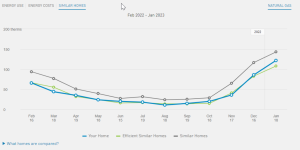LMichaels
TVWBB 2-Star Olympian
Another thing that bugs me with all this "electrify" this and that, electric cars and so on. All this electricity comes from somewhere. Vast majority burning fuels far more polluting than the NG we burn in our homes. Or the very well controlled ones coming out of modern vehicle's tail pipes. Until IF or WHEN we can produce electricity without some ancillary pollution at the source. Electricity (any energy) doesn't come for free or without pollution. Maybe one day but we're a long way off from that day.
Another issue is the cost of whatever energy you use or have easily available. Here, (for reasons if I go into would get me banned for life), electricity rates are some of the highest in the country. It makes no economic sense to use it in IL. Let alone the cost of the equipment and so on. Yeah you can make your house look like a solar generation farm, adding 10s of thousands of $$$ of equipment like my son in law did. But even after all that, the way those things work he still cannot run his home directly off the solar panels.
There may be some cool and pretty good technology down the pipe but it's still a looooooong way to go
Another issue is the cost of whatever energy you use or have easily available. Here, (for reasons if I go into would get me banned for life), electricity rates are some of the highest in the country. It makes no economic sense to use it in IL. Let alone the cost of the equipment and so on. Yeah you can make your house look like a solar generation farm, adding 10s of thousands of $$$ of equipment like my son in law did. But even after all that, the way those things work he still cannot run his home directly off the solar panels.
There may be some cool and pretty good technology down the pipe but it's still a looooooong way to go


